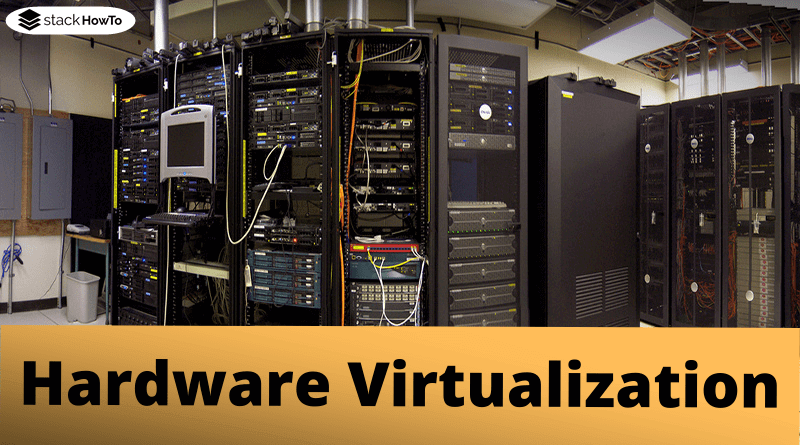What is Hardware Virtualization?
Virtualization is used to provide additional computing resources or increase resource efficiency. With virtualization, you can functionally simulate devices or provide virtual systems that replicate the functionality of a real system. This allows multiple virtual systems to run in parallel on the same physical host. This approach saves and scales hardware resources, increases the efficiency of their use, and reduces development and operating costs.
What is Hardware Virtualization?
Intel expanded the x86 processor architecture to support virtual platforms using hardware virtualization in Intel processors. AMD is also joining the development effort to support hardware virtualization.
To enable direct use of hardware resources in virtual machines (VM), Intel and AMD processor models offer extended instruction sets for hardware virtualization. This technology is called VT-x (Virtual Technology Extensions) for Intel processors and SVM (Secure Virtual Machine) for AMD processors. The functional principles of both technologies are almost identical.
Hardware virtualization at the processor level is a logical continuation of software virtualization and allows multiple VMs to run based on the virtualization properties of the host computer’s CPU. This development started with multitasking, ran through the simulation of two virtual processors within a physical processor, and reached the level of full hardware virtualization.
Hardware virtualization emulates multiple virtual processors for each of the guest operating systems. With these processor technologies, you can emulate multiple virtual processors in a guest operating system or, in the case of multiple processor cores, in a physical processor.
Advantages
Hardware virtualization offers certain advantages over software virtualization in certain application areas. With hardware virtualization it is possible:
- To simplify the development of virtualization platforms,
- Reduce development time and costs,
- Increase the performance of virtual platforms,
- Run multiple virtual platforms independently of each other and switch between them at the hardware level,
- Logically decouple virtual guest systems from the architecture and implementation of the host platform.
Example :
- KVM – Kernel-based Virtual Machine (Open Source)
- QEMU (Freeware; Lizenz: GNU GPL v2)
- vSphere, ESXi, VMware Infrastructure (VMware)
- Hyper-V, Windows Virtual PC (Microsoft)
- PowerVM, PR/SM, LPAR (IBM)
- XenServer (Citrix)
- Proxmox VE (Proxmox)
- LynxSecure (Lynx Software Technologies)
- PikeOS (SYSGO GmbH)
Disadvantage
One of the drawbacks of hardware virtualization is the potential risk of unauthorized control of guest systems through the hypervisor.
The hypervisor is a separate subsystem that is located between the host operating system and the guest operating systems and is responsible for managing and reliable execution of the VM. As an intermediary between the guest systems and the host, the hypervisor can intercept all events and requests, which in turn require attention and intervention.
Hackers could develop a malicious code and place it in the hypervisor after taking control of the host operating system. This would allow the hacker to perform all activities outside the operating system, including controlling guest systems.
However, developing malware that uses virtualization technologies is much more difficult than exploiting various vulnerabilities in operating systems. Moreover, the antivirus software installed on the host system offers the possibility to automatically detect and stop such manipulation.
Such security problems can be solved by the hypervisor itself. The correct, stable, and secure operation of the guest systems depends on the reliability and security of the hypervisor.
The need to support hardware virtualization has forced processor manufacturers to change their processor architectures by introducing additional processor virtualization commands to give guest systems direct access to processor resources. This extension of the processor instruction set is known as Virtual Machine Extensions (VMX).
Conclusion
Support of virtualization technologies directly in the hardware opens up broad perspectives for the use of VMs as reliable, secure, and flexible instruments for increasing the efficiency of virtual infrastructures. Hardware virtualization increases performance and reduces performance degradation when multiple VMs are running on the same physical server. This also makes it possible to increase the security of virtual systems in a company’s IT infrastructure.





